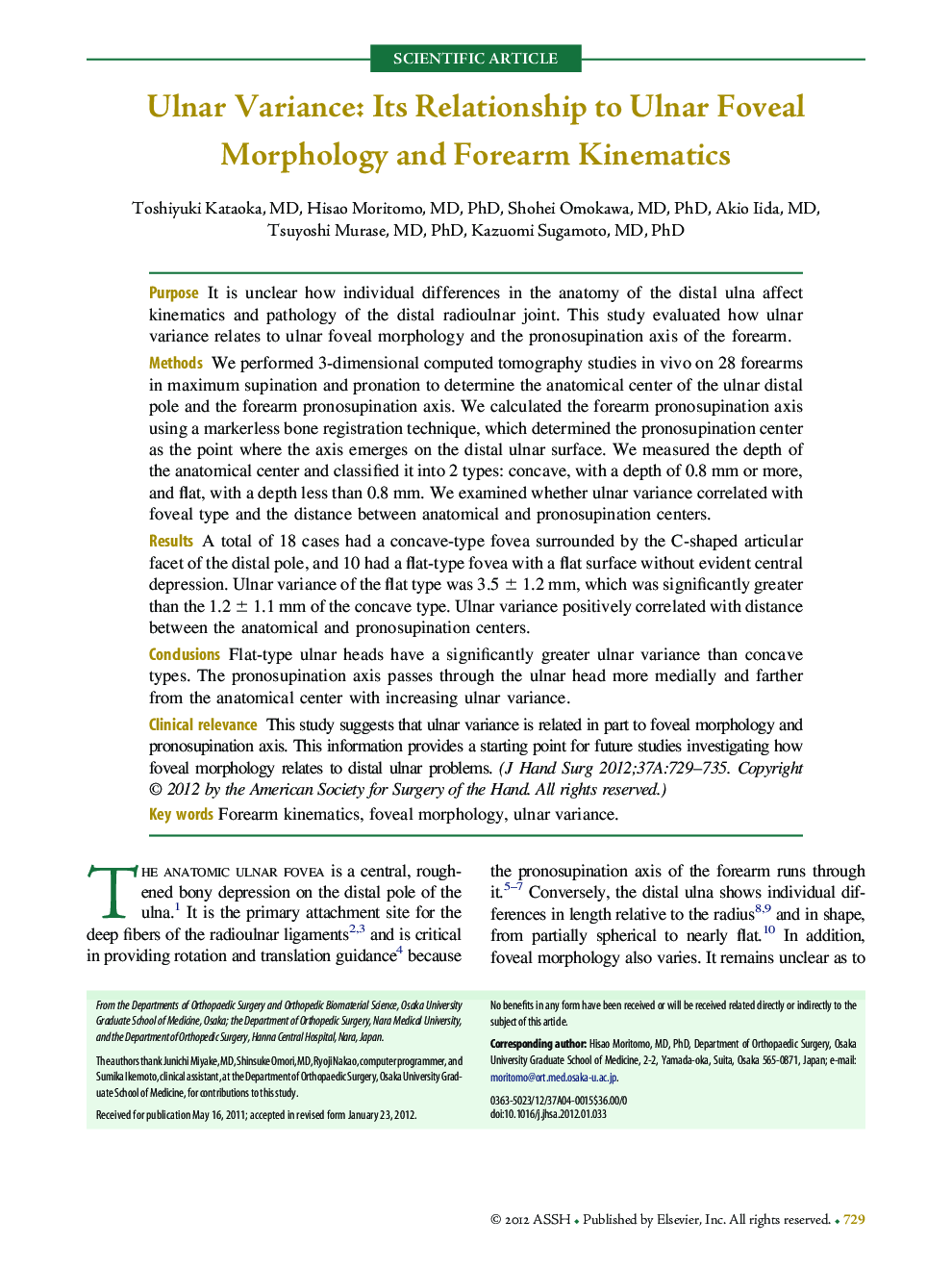| کد مقاله | کد نشریه | سال انتشار | مقاله انگلیسی | نسخه تمام متن |
|---|---|---|---|---|
| 4069214 | 1604397 | 2012 | 7 صفحه PDF | دانلود رایگان |

PurposeIt is unclear how individual differences in the anatomy of the distal ulna affect kinematics and pathology of the distal radioulnar joint. This study evaluated how ulnar variance relates to ulnar foveal morphology and the pronosupination axis of the forearm.MethodsWe performed 3-dimensional computed tomography studies in vivo on 28 forearms in maximum supination and pronation to determine the anatomical center of the ulnar distal pole and the forearm pronosupination axis. We calculated the forearm pronosupination axis using a markerless bone registration technique, which determined the pronosupination center as the point where the axis emerges on the distal ulnar surface. We measured the depth of the anatomical center and classified it into 2 types: concave, with a depth of 0.8 mm or more, and flat, with a depth less than 0.8 mm. We examined whether ulnar variance correlated with foveal type and the distance between anatomical and pronosupination centers.ResultsA total of 18 cases had a concave-type fovea surrounded by the C-shaped articular facet of the distal pole, and 10 had a flat-type fovea with a flat surface without evident central depression. Ulnar variance of the flat type was 3.5 ± 1.2 mm, which was significantly greater than the 1.2 ± 1.1 mm of the concave type. Ulnar variance positively correlated with distance between the anatomical and pronosupination centers.ConclusionsFlat-type ulnar heads have a significantly greater ulnar variance than concave types. The pronosupination axis passes through the ulnar head more medially and farther from the anatomical center with increasing ulnar variance.Clinical relevanceThis study suggests that ulnar variance is related in part to foveal morphology and pronosupination axis. This information provides a starting point for future studies investigating how foveal morphology relates to distal ulnar problems.
Journal: The Journal of Hand Surgery - Volume 37, Issue 4, April 2012, Pages 729–735